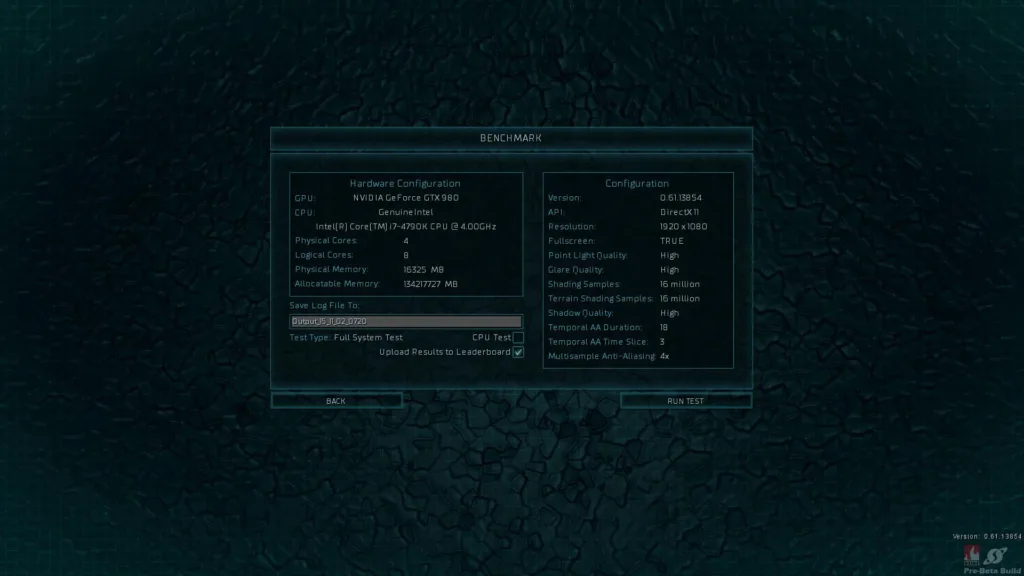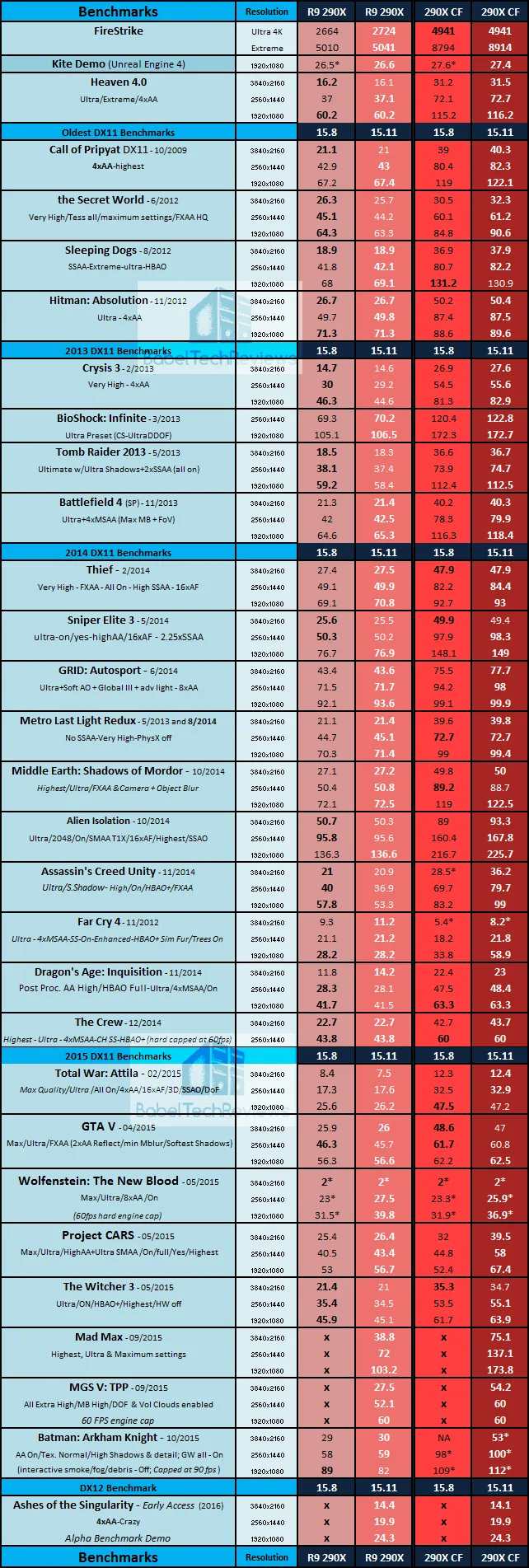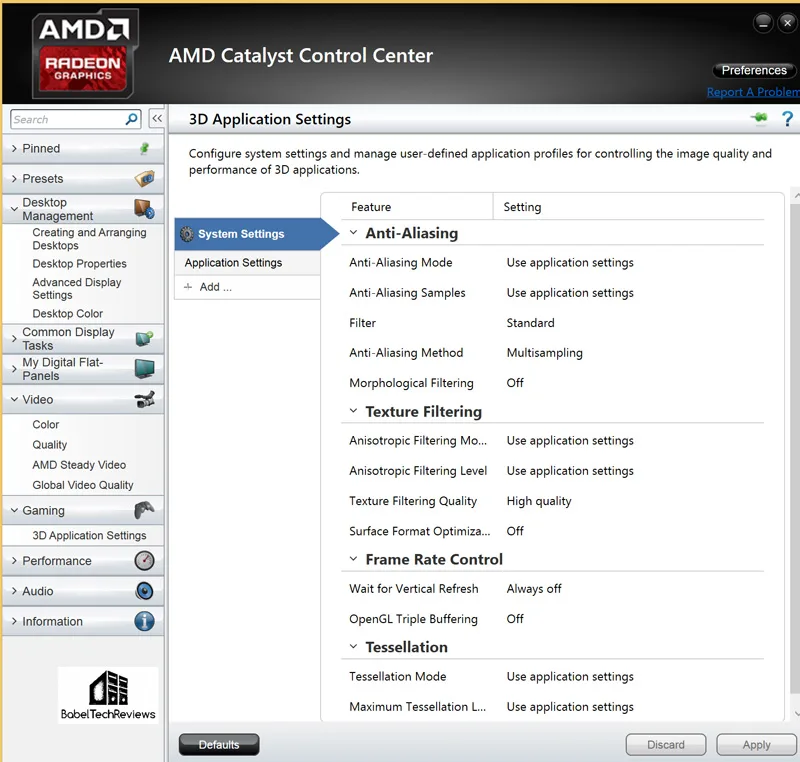As part of a regular feature for BabelTechReviews, this driver analysis will look at the performance of 27 PC games using the latest Catalyst 15.11 Beta drivers which were released last week. We will compare these drivers versus Catalyst 15.8 drivers which were released on August 30 using the reference 290X and 290X CrossFire. We are also going to focus on our latest benchmark, Ashes of the Singularity, which is the first publicly released DX12 benchmark, so far.
We have introduced something new at BTR. The Big Picture, once reserved for video card reviews, is now included with every driver performance analysis beginning with the last one. We are comparing the GTX 980 Ti versus the Fury X, the GTX 980 versus the R9 390X OC, the GTX 970 OC versus the R9 290X, and for added information, the most recent 290X CrossFire and GTX 980 SLI results. The Fury X is benchmarked with the Catalyst 15.9.1 betas, and the GTX 980 Ti/SLI and GTX 980 are using Nvidia’s GeForce 358.50 drivers.
We want to document the performance changes of this current Catalyst 15.11 beta driver on Windows 10. Here we are going to give you the performance results of our cards at 1920×1080, 2560×1440, and at 3840×2160, using 27 games and 3 synthetics tests including the “Kite Demo” on Unreal Engine 4. This driver performance evaluation will compare the performance changes since AMD’s older driver set Catalyst 10.8 released at the end of August.
Our testing platform is Windows 10 64-bit Home Edition and we are using an Intel Core i7-4790K which turbos all cores to 4.4GHz, an ASUS Z97E motherboard, and 16GB of Kingston “Beast” HyperX RAM at 2133MHz. The settings and hardware are identical except for the drivers being tested.
At R9 280X and above, we test at higher settings and at higher resolutions generally than we test midrange and lower-end cards. All of our games are now tested at three resolutions at 60Hz: 3840×2160, 2560×1440, and 1920×1080, and we use DX11 whenever possible with a very strong emphasis on the latest DX11 games. .
Let’s get right to the test configuration, to the driver release notes, and then to our results.
Test Configuration
Test Configuration – Hardware
- Intel Core i7-4790K (reference 4.0GHz, HyperThreading and Turbo boost is on to 4.4GHz; DX11 CPU graphics), supplied by Intel.
- ASUS Z97-E motherboard (Intel Z97 chipset, latest BIOS, PCIe 3.0 specification, CrossFire/SLI 8x+8x)
- Kingston 16 GB HyperX Beast DDR3 RAM (2×8 GB, dual-channel at 2133MHz, supplied by Kingston)
- XFX Fury X, 4GB, stock reference clocks
- MSI R9 390X 8GB, at MSI factory overclock 1080/1500MHz.
- VisionTek R9 290X & PowerColor 290X PCS+, 4GB, stock reference clocks (non-throttling, fan allowed to spin to 100%) Uber clocks.
- GALAX GTX 970 EXOC, 4GB, GALAX factory overclock, supplied by GALAX
- GeForce GTX 980, 4GB, reference version at reference clocks, supplied by Nvidia
- GeForce GTX 980 Ti, 6GB reference clocks, supplied by Nvidia
- Two 2TB Toshiba 7200 rpm HDDs
- EVGA 1000G 1000W power supply unit
- Cooler Master 2.0 Seidon240 CPU water cooler, supplied by Cooler Master
- Onboard Realtek Audio
- Genius SP-D150 speakers, supplied by Genius
- Thermaltake Overseer RX-I full tower case, supplied by Thermaltake
- ASUS 12X Blu-ray writer
- Monoprice Crystal Pro 4K
Test Configuration – Software
- AMD Catalyst 15.11, 15.9.1, and 15.8 Beta. High Quality, all optimizations off, use application settings except for Vsync, off.
- Nvidia GeForce 355.82 & 350.50 WHQL drivers. High Quality, prefer maximum performance, single display.
- AA enabled as noted in games; all in-game settings are specified with 16xAF always applied
- All results show average frame rates except as noted.
- Highest quality sound (stereo) used in all games.
- Windows 10 64-bit Home Edition, all DX11 titles were rununder DX11 render paths. Latest DirectX
- All games are patched to their very latest versions at the time of publication.
Here are the settings we always use in AMD’s Catalyst Control Center for our default benching.
Here is Nvidia’s Control Panel and the settings that we run:

-
The 27 Game benchmarks & 3 synthetic tests
- Synthetic
- Firestrike – Basic & Extreme
- Heaven 4.0
- Kite Demo, Unreal Engine 4
-
DX11
- STALKER, Call of Pripyat
- the Secret World
- Sleeping Dogs
- Hitman: Absolution
- Tomb Raider: 2013
- Crysis 3
- BioShock: Infinite
- Metro: Last Light Redux (2014)
- Battlefield 4
- Thief
- Sniper Elite 3
- GRID: Autosport
- Middle Earth: Shadows of Mordor
- Alien Isolation
- Assassin’s Creed Unity
- Far Cry 4
- Dragon’s Age: Inquisition
- The Crew
- Total War: Attila
- Wolfenstein: The Old Blood
- Grand Theft Auto V
- ProjectCARS
- the Witcher 3
- Batman: Arkham Origins
- Mad Max
- Metal Gear Solid V: The Phantom Pain
- DX12 Games
- Ashes of the Singularity – Alpha Demo benchmark
Ashes of the Singularity
Ashes of the Singularity is an AMD Evolved title as a Steam Early Access Pre-Beta. It is scheduled to be released next year, but it is an Alpha DX12 game in an unfinished and unoptimized state. It is an RTS much in the style of Supreme Commander and it uses DX12 to make it possible for very large numbers of units to interact at one time onscreen.
There is only one playable race now, and many promised features are yet to be introduced, but the benchmark – although cranky about changing resolutions – seems to be repeatable and an accurate depiction of what is happening in the game.
The benchmark is quite challenging at higher resolutions and we use the same “Crazy” (above High) settings plus 4xMSAA applied that we use for Nvidia video cards. Here are the fully maxed out DX12 settings that we used. This may or may not turn out to be a good DX12 benchmark, but in the absence of any other, we will continue to chart its progress until the game is released. It also received a 500MB patch the day this evaluation was published that will be covered in the next performance analysis.
This may or may not turn out to be a good DX12 benchmark, but in the absence of any other, we will continue to chart its progress until the game is released. It also received a 500MB patch the day this evaluation was published that will be covered in the next performance analysis.
If you missed the changes with the older drivers, look at AMD’s release highlights regarding the Catalyst 15.8 WHQL drivers which can be found in our performance analysis.
Release Notes Highlights for Catalyst 15.11 Beta
The release notes and download links for Catalyst 15.11 beta drivers can be found here for Windows 10.
Highlights of AMD Catalyst™ 15.11 Beta Windows Driver
Performance Optimizations
- Call of Duty : Black Ops III – includes quality and performance optimizations
Let’s head to the chart to compare the driver progress from the 15.8 Catalyst drivers to the new beta 15.11 Catalyst driver since we tested them the last time.
The Summary Chart
Below is the summary chart of 27 games and 3 synthetic tests. The highest settings are always chosen and it is DX11 when there is a choice, and the settings are ultra or maxed. Specific settings are listed on the Main Performance chart. We have added the “Kite Demo” on Unreal Engine 4 using the default settings at 1920×1080 as measured by Fraps.
The benches are run at 1920×1080, 2560×1440, and 3840×2160. All results, except for Firestrike, show average framerates and higher is always better. In-game settings are fully maxed out and they are identically high or ultra across all platforms. “NA” means the game would not run at the settings chosen, and an *asterisk means that there were issues with running the benchmark, usually visual artifacting.
We note some performance improvements with the 290X with AMD’s new Catalyst 15.11 beta driver over the older 15.8 driver in many games. Generally, the differences are just incremental benchmarking “noise”, and well within the benching margin of error. However, 290X CrossFire mostly got some large performance gains with 15.11 beta over 15.8 but with some failures also. With Far Cry 4, there was significant improvement to the visuals and to performance except at 4K when CrossFire is enabled with the latest betas. Batman: Arkham Knight‘s latest patch broke CrossFire completely; it runs faster, but there is still a lot of artifacting now. And Wolfenstein: The New Blood is still a flicker-fest.
There also were some issues with CrossFire frame pacing with the Catalyst 15.8 beta, especially with Assassin’s Creed: Unity and with the Witcher 3, that are mostly resolved with 15.11.
The Big Picture once reserved for video card reviews has been expanded to feature all of our competing cards on recent drivers. We are beginning with the GTX 980 Ti versus the Fury X, the GTX 980 versus the R9 390X OC, the GTX 970 OC versus the R9 290X, and for added information, 290X CrossFire and GTX 980 SLI results. The Fury X is on the Catalyst 15.9.1 betas and the GTX 980 Ti/SLI and GTX 980 are on Nvidia’s WHQL 358.50 drivers. The MSI 390X OC is on Catalyst 15.8 and the GTX 970 XOC is on GeForce 355.82 as shown on the top and bottom lines of the chart.
The Big Picture
Conclusion:
 So far, we would recommend upgrading to the latest Catalyst 15.11 beta driver from 15.8 because there are generally advantages that are sometimes significant, depending on the game you are playing. For many games in our benching suite, Catalyst 15.11 may bring significant improvement to the 290X over the older drivers; for others, it may bring some disadvantages. For 290X CrossFire, the benefits generally outweigh the negatives.
So far, we would recommend upgrading to the latest Catalyst 15.11 beta driver from 15.8 because there are generally advantages that are sometimes significant, depending on the game you are playing. For many games in our benching suite, Catalyst 15.11 may bring significant improvement to the 290X over the older drivers; for others, it may bring some disadvantages. For 290X CrossFire, the benefits generally outweigh the negatives.
Stay tuned, next up we are planning a GeForce 358.91 WHQL driver performance evaluation featuring Fallout 4. And we shall add it to our benching suite for our next evaluation.
Happy gaming!


Comments are closed.